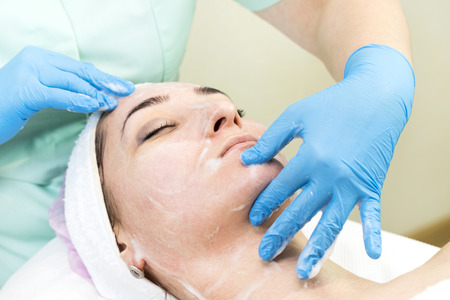Understanding Waxed Skin Needs
Anyone who’s ever gotten a wax knows the feeling: that mix of smooth, hair-free skin and a little post-treatment sting. In the U.S., waxing is a popular choice for getting ready for summer or just maintaining that fresh look year-round, but it’s no secret that your skin can feel pretty sensitive afterward. Why is that? When you wax, you’re not just removing hair—you’re also taking away the top layer of dead skin cells. This leaves your skin temporarily exposed and vulnerable to irritation, redness, and even breakouts if you don’t treat it right. Most Americans who wax expect a little discomfort, but nobody wants lingering soreness or ingrown hairs. What your skin really needs after waxing is gentle care, calming ingredients, and some time to heal. Whether it’s your first wax or part of your regular beauty routine, understanding how your skin reacts—and what it craves after waxing—sets the stage for the best aftercare possible.
Immediate Aftercare: The First 24 Hours
Right after waxing, your skin is extra sensitive and prone to irritation, redness, and even ingrown hairs. The first 24 hours are absolutely crucial for setting the tone for a smooth recovery. Here’s what you should do—and just as importantly, what you should avoid—if you want to keep your skin calm and happy.
What To Do Immediately After Waxing
- Keep it cool: Apply a cold compress or a chilled gel (like aloe vera) to soothe inflammation and reduce redness.
- Moisturize gently: Use a fragrance-free moisturizer or post-wax lotion with calming ingredients such as chamomile or calendula.
- Wear loose clothing: Tight fabrics can rub against newly waxed skin, causing unnecessary friction and irritation. Go for soft, breathable cotton if you can.
- Stay clean: Gently cleanse the area with lukewarm water and a mild soap, but don’t scrub. Pat dry—never rub.
What To Avoid After Waxing
| Don’ts | Why |
|---|---|
| No hot showers, saunas, or steam rooms | The heat opens pores further and increases the risk of infection and irritation |
| No heavy workouts or sweating | Sweat can cause bacteria buildup and clog pores, leading to breakouts or ingrown hairs |
| No scented products or exfoliants | Fragrances and scrubs can sting and inflame freshly waxed skin |
| No touching or scratching | Your hands carry bacteria that can easily get into open pores and cause trouble |
| No tanning (sun or beds) | Your skin is more vulnerable to UV damage right after waxing |
Pro Tip from Real Users:
If you’re tempted to test new skincare products right after waxing—don’t. Stick with tried-and-true basics until your skin has calmed down. Most people find that less is definitely more during this window.
The Bottom Line:
Treat your skin like it’s in recovery mode for the first day after waxing. Be gentle, avoid heat and friction, and resist the urge to experiment with new lotions or cleansers. Taking these steps will help you dodge common pitfalls like bumps, redness, and those pesky ingrown hairs—so you can show off your freshly waxed glow with total confidence!
![]()
3. Go-To Products for Soothed Skin
If you’ve just had a waxing session, choosing the right aftercare products can make all the difference between irritated, bumpy skin and that smooth, happy glow. In the U.S., consumers are pretty particular about what goes on their freshly waxed skin—so let’s talk about what actually works versus what’s just hyped online.
Aloe Vera Gel: The All-American Classic
There’s a reason why almost every American bathroom cabinet seems to have a bottle of aloe vera gel. After waxing, it’s a go-to for its instant cooling effect and ability to calm redness or stinging. Look for 100% pure aloe or gels with minimal additives—your skin will thank you.
Fragrance-Free Lotions: Sensitive Skins Best Friend
After waxing, steer clear of anything heavily scented or full of dyes; these can trigger irritation faster than you can say “regret.” Instead, opt for fragrance-free lotions designed specifically for sensitive skin. Brands like Cetaphil and CeraVe are favorites in the States because they’re gentle, effective, and won’t clog pores.
Skip the TikTok Trends (Most of the Time)
We all love scrolling through social media for new beauty hacks, but when it comes to post-wax care, not everything trending on TikTok is dermatologist-approved. DIY concoctions with essential oils or weird household ingredients might look fun but can lead to breakouts or even burns. Stick with tried-and-true basics recommended by skincare professionals rather than chasing the latest viral fad.
Bottom Line: Choose Wisely
The American market is packed with options, but less is usually more. Go for simple, proven products—aloe vera gel and fragrance-free lotions are your best bet—and leave the experimental stuff on your social feed. Your skin will stay smoother, healthier, and a lot happier!
4. Home Remedies and DIY Solutions
When it comes to post-waxing care, sometimes the best solutions are already in your kitchen or bathroom cabinet. Here’s a practical look at home remedies most Americans actually have on hand—plus, my honest take on what’s really worth trying.
Everyday Items That Soothe Waxed Skin
| Remedy | How to Use | Real-World Effectiveness |
|---|---|---|
| Aloe Vera Gel (store-bought or from plant) | Apply a thin layer directly onto clean skin after waxing. | Cools instantly, reduces redness; feels great, especially if refrigerated first. |
| Coconut Oil | Smooth a small amount over waxed areas before bed. | Moisturizes well but can feel greasy; good for dry or flaky spots. |
| Cold Compress (ice pack or bag of frozen peas wrapped in cloth) | Hold gently against skin for 5–10 minutes right after waxing. | Quick relief for swelling or irritation; super effective and easy. |
| Witch Hazel Toner (alcohol-free) | Dab onto a cotton pad and swipe over skin post-wax. | Takes away sting and helps close pores, but can be drying for some people. |
| Oatmeal Bath or Paste | Add oats to bathwater or make a thick paste with water and apply to irritated patches. | Soothes itchiness; old-school but works if you’re feeling uncomfortable all over. |
What Actually Works?
From a consumer perspective, aloe vera is hands-down the MVP: it’s cooling, non-sticky, and most people already have some version of it at home. Cold compresses are a close second—they’re fast and you don’t need to buy anything special. Coconut oil is great for overnight moisture, though avoid if you’re prone to breakouts. Witch hazel feels refreshing but make sure it’s alcohol-free to prevent extra dryness. Oatmeal is less convenient unless you really need full-body soothing, but it’s safe for sensitive skin.
Pro Tips for Best Results
- Avoid harsh ingredients: Skip anything with fragrance, menthol, or alcohol immediately post-wax.
- No hot showers: Stick with lukewarm water until redness fades—heat can make irritation worse.
- Less is more: Don’t layer too many products; stick with one gentle remedy at a time to see what your skin likes best.
If you’re looking for real results without spending extra money, start with aloe vera and cold compresses. In my experience—and from plenty of trial and error—these simple fixes really do the trick for calm, happy post-wax skin.
5. What Not to Do After Waxing
Let’s get real—waxing leaves your skin vulnerable, and making the wrong moves afterward can seriously mess with your results. Here’s the straight talk on what you should absolutely avoid if you want your skin to stay smooth, calm, and bump-free.
Skip Hot Showers and Baths
It might be tempting to hop into a steaming shower to relax, but hot water opens up pores even more and can cause irritation or redness to linger. Stick with lukewarm water for at least 24 hours after waxing.
Avoid Touching or Scratching
Your hands aren’t as clean as you think! Touching freshly waxed skin introduces bacteria that can lead to breakouts or infections. If it itches, resist scratching—use a cold compress instead.
No Heavy Lotions, Fragrances, or Alcohol-Based Products
Fragranced lotions and alcohol-based toners can sting like crazy on just-waxed skin and often make irritation worse. Stick to gentle, fragrance-free moisturizers if you need some hydration.
Don’t Hit the Gym (Yet!)
Sweat and friction are not your friends right now. Working out post-wax increases the risk of ingrown hairs and breakouts. Give yourself a day off before getting back to your usual fitness routine.
Say No to Sunbathing and Tanning Beds
Your skin is super sensitive after waxing, so exposing it to UV rays can cause burns or dark spots. Hold off on sunbathing or tanning for at least 48 hours.
Avoid Tight Clothing
This is especially true for bikini or leg waxes: tight jeans or leggings trap sweat and bacteria against your skin, which can lead to bumps and ingrowns. Choose loose, breathable fabrics while you heal.
Bottom line: After waxing, less is more when it comes to products and activity. Treat your skin gently so you can enjoy those silky-smooth results without any unwanted side effects!
6. When to Worry: Spotting a Problem
While most waxing experiences end with just a bit of redness or mild sensitivity, it’s important to recognize when your skin is telling you something isn’t right. Taking care of freshly waxed skin means knowing the difference between normal after-effects and warning signs that require professional attention. As someone who’s been on both sides—the consumer and the friend giving honest feedback—I know ignoring red flags can make things worse.
Here are the key signals your skin needs expert help:
Persistent Redness or Swelling
If your skin stays red, swollen, or inflamed for more than 48 hours after waxing, it’s time to be concerned. A little irritation is normal, but if it gets worse instead of better, there could be an infection brewing or an allergic reaction happening.
Pain That Doesn’t Quit
Waxing shouldn’t leave you in lingering pain. If you feel throbbing, burning, or sharp discomfort beyond the first day, especially if it gets more intense over time, don’t brush it off. This could signal nerve involvement or a deeper issue.
Signs of Infection
Look out for pus, yellowish crusting, spreading redness, heat at the site, or a fever. These are classic signs of an infection and should never be ignored. The sooner you see a healthcare provider, the better.
Unusual Bumps or Blisters
Tiny red bumps are common right after waxing, but blisters, large painful pimples, or hives are not. If these appear—especially if they spread—it might be a sign of contact dermatitis or even herpes simplex (if waxing near the lips).
Skin Peeling or Oozing
Your skin should not peel like a sunburn or ooze fluids after waxing. This can indicate over-exfoliation or a reaction to products used during aftercare. Stop all home treatments and call your dermatologist.
What Should You Do?
If you notice any of these symptoms: stop using all home remedies and over-the-counter creams until you get medical advice. Take photos of the area for reference and reach out to your waxer or a doctor—don’t wait it out hoping things will improve on their own. Your health comes first!
As consumers, we deserve peace of mind as much as smooth skin. Trust your gut; if something feels off, get help sooner rather than later.
7. Keeping Skin Smooth Between Waxes
If you want your waxed skin to stay silky and bump-free, aftercare doesn’t end once you leave the salon. Consistent at-home maintenance makes a huge difference in how your skin looks and feels between appointments. Here are some practical tips from a real consumer’s perspective—these are the things I wish I knew sooner!
Exfoliate Regularly—But Gently
Dead skin buildup is your worst enemy when it comes to ingrown hairs and rough patches. Use a gentle body scrub or a chemical exfoliant (like those with AHAs or BHAs) two to three times per week, starting about 48 hours after waxing. Don’t overdo it; harsh scrubbing can irritate sensitive skin.
Stay Moisturized
Hydrated skin is happy skin! Apply a fragrance-free lotion or natural oil daily to keep your skin soft and supple. Ingredients like aloe vera, jojoba oil, or shea butter are great for soothing and locking in moisture without clogging pores.
Watch Out for Irritants
Avoid products with heavy fragrances, alcohol, or harsh chemicals. These can dry out or inflame freshly waxed areas, making bumps and redness worse. Stick with simple, gentle formulas designed for sensitive skin.
Don’t Shave Between Waxes
This one’s tough if you’re impatient, but shaving messes up your hair growth cycle and increases the risk of irritation and ingrowns. Trust me—waiting it out means less discomfort (and better results) at your next appointment.
Prep for Your Next Wax
A few days before your next session, exfoliate again to clear away dead cells and let new hairs break through the surface. Make sure your hair is the right length (about 1/4 inch), and avoid any tanning or heavy sun exposure that could make your skin extra sensitive.
Final Thoughts from a Real Consumer
Keeping waxed skin smooth really comes down to consistency and using the right products. If you treat your skin kindly between appointments—with gentle care and lots of moisture—you’ll notice fewer bumps, less irritation, and an overall glow that’ll make every wax worth it!


